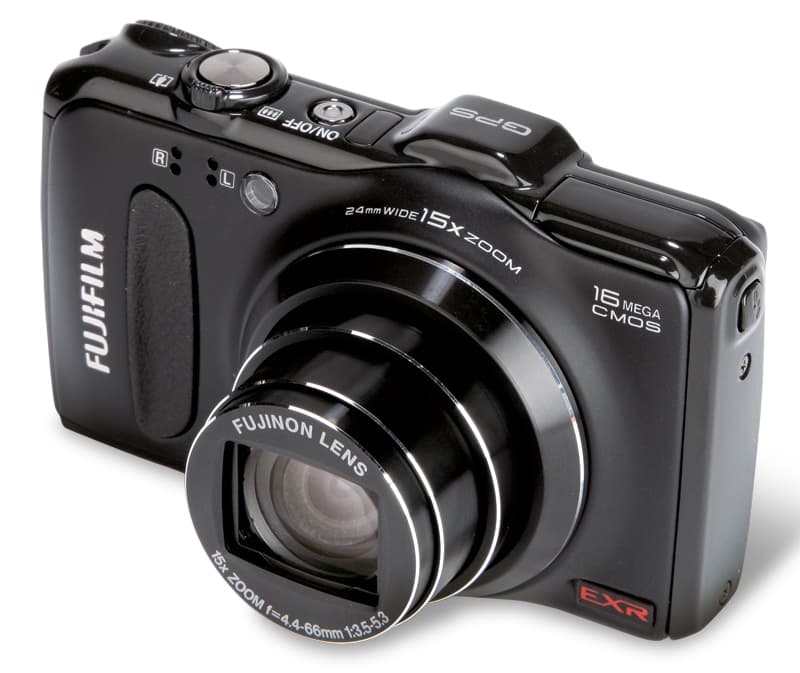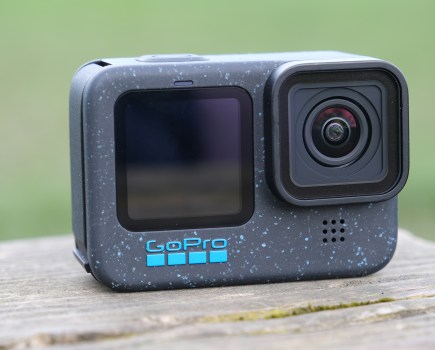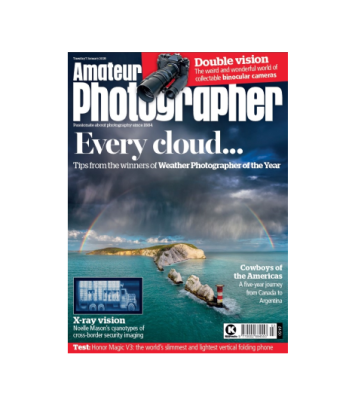Fuji FinePix F600EXR at a glance:
- 16-million-pixel EXR CMOS sensor
- 24-360mm f/3.5-5.3 (15x optical zoom)
- 1/2in (6.4×4.8mm) sensor with 5.41x focal magnification
- GPS with landmark navigator
- Street price around £220
The Fujifilm FinePix F600EXR replaces the F550EXR, which we tested in AP 17 September 2011 and gave a four-star rating. The additional features in the F600EXR appear to be fairly limited, and include a refined GPS system – which is about the most detailed I have seen in any camera – and a motion-detection function. The F600EXR is part of Fuji’s range of travel compacts, and faces stiff competition from models such as Panasonic’s Lumix DMC-TZ20 and Sony’s Cyber-shot HX9V.
Features
At the core of the Fuji FinePix F600EXR is the company’s unique EXR CMOS sensor, which in this model has 16 million pixels. The sensor’s pixel arrangement is harnessed through the EXR shooting modes, and includes EXR auto (that recognises any of 54 scene types and 99 shooting patterns), as well as the three dedicated modes of high resolution (HR), high sensitivity and low noise (SN) and dynamic range (DR). Motion detection, which is a new feature to the F600EXR, determines if the subject is moving and adjusts the exposure accordingly.
The 6.4×4.8mm sensor is fairly standard for a compact camera at this level, and results in a 5.41x magnification factor. To achieve the large 24-360mm optical zoom range the Fujinon lens is 4.4-66mm, with a maximum aperture of f/3.5-5.3. At any given setting there are three aperture values available. The zoom range can be extended digitally to 720mm for an effective 30x zoom, although at reduced image quality.
While the EXR auto mode is designed to cover all situations, the camera also offers manual exposure control. What is likely to please discerning photographers is the ability to capture in raw (RAF) format as well as JPEG, which means there is a good level of control both pre and post-capture. MyFinePix Studio for Windows and Raw Converter for Mac software are included.
There are a number of features on the F600EXR to keep the enthusiast photographer happy. Along with PASM control and EXR auto, the shooting-mode dial offers auto, scene position for 18 different scenes, and advanced, which includes motion panorama 360 that produces a seamless panorama from a single sweep, pro focus and pro low light. Film-simulation modes mean that capturing black & white and high-contrast vivid images is possible, and the camera offers film-simulation bracketing, too.
Build and handling
Like all good compact cameras designed for travel, the Fuji FinePix F600EXR is very small, measuring just 103.5×62.5×32.6mm, with a minimum depth of 22.9mm. This means the camera slips comfortably into a trouser pocket. A leather-effect strip on the front of the body provides a good grip, and the position of the angled shooting-mode dial next to the thumb is spot on.
The size and layout of the F600EXR are virtually identical to its predecessor, with Fuji sticking to its simple and effective design. On the previous model, the flash automatically popped up on start-up, which was a minor frustration, but on the F600EXR there is a catch to release the pop-up flash.
Changing the focal range is a breeze thanks to the fast and responsive zoom. In cameras of this type I am usually concerned about the telephoto end of the lens, where any movements in handheld shooting are magnified. However, the F600EXR features continuous and shooting stabilisation, with each able to be combined with motion stabilisation. This makes a huge difference when activated, giving an approximate extra 2EV light of shake-free results. Given that 2EV in the ISO sensitivity range can mean the difference between shooting at ISO 200 and ISO 800, this is significant.
Although I like to keep manual control over a camera, there are situations when the EXR auto mode is preferable, and one example is in the telephoto settings. Only in this mode is ‘advanced anti-blur’ available, and this provides even better stabilisation for blur-free results.
As part of its travel-friendly make-up, the F600EXR offers GPS geotagging that displays latitude and longitude information. Furthermore, the name of the place and a landmark can be included. Landmark Navigator acts like a compass, and indicates where and how far landmarks and places of interest are in relation to the current position. This is a great tool to use if you are in an unfamiliar location. In built-up areas such as central London the signal is interrupted at times, so the information is not always available.
GPS is a great tool for the traveller, although it should come with a warning about the battery. A 300-shot battery life is quoted, but this is significantly reduced when GPS is activated. There is the option to deactivate the location search, have it activated when the camera is switched on or have it on permanently.
On one occasion I found that the battery was flat when I came to use it, without having taken a single shot, because the feature was permanently on. I found that activating the GPS when I was in a location I wanted to remember, and then deactivating it afterwards, was the best compromise. The tags can be used in conjunction with Google Maps and the included MyFinePix Studio software to plot a route of the journey.

Image: Such a wide focal range makes shooting a number of situations possible, which is good for getting in close to distant subjects
Performance
The very wide construction of the lens results in curvilinear barrel distortion at wider focal lengths below 60mm (effective). Vignetting is obvious at the widest focal length, but is hardly noticeable at any other setting.
Likewise, with the same 16-million-pixel 6.4×4.8mm sensor as the F550EXR, there is no improvement in image quality over its predecessor, which means the F600EXR reaches the 22 marker on our resolution charts at ISO 100 and the 18 marker at ISO 3200. The extended ISO 6400 setting is at a reduced resolution and barely makes an impression on the resolution charts, although this is pretty much in line with the competition.
Luminance noise is quite noticeable at ISO 400, and by ISO 3200 it is very obvious, with patches of chroma noise in yellows, greens and magentas. In low-light conditions I found that although using the EXR auto modes gives a marginally more smudged result, the overall final image quality is much improved, with noise significantly reduced.
Despite this, as an all-purpose camera the F600EXR is one of the very best models available. Increasing the zoom range does compromise image quality a little, but a wide zoom is incredibly useful and provides the choice to capture from afar or fit in an entire scene from close up. Colours are more natural than many compact cameras that give an overly vivid colour rendition, although there is the option here to add some vibrancy using ‘Velvia’ in the film simulation.
Although using EXR auto mode doesn’t allow for exposure control, it is a very handy auto system. I found I could rely on it on many occasions to produce a good end result, regardless of what aperture was selected. In fact, sometimes it was preferable to making manual adjustments.
The EXR sensor has a unique method of processing information, and by combining neighbouring pixels the high resolution/high sensitivity (SN) and pro low-light settings deal with chroma noise that is more evident than when using the manual control, with a resulting smudging of detail.

Image: In this low-light scene, using the dedicated EXR setting proved better than controlling the exposure manually
Resolution, Noise & Dynamic Range

These images show 72ppi (100% on a computer screen) sections of images of a resolution chart, captured with the lens set to its 100mm point. We show the section of the resolution chart where the camera starts to fail to reproduce the lines separately. The higher the number visible in these images, the better the camera’s detail resolution is at the specified sensitivity setting.
Verdict
The Fujifilm FinePix F600EXR is a great all-purpose camera, packed with useful features and shooting modes for travel photographers. There is little reason for F550EXR owners to upgrade to the F600EXR, though, and those considering the two may want to opt for the F550EXR, which is around £20 cheaper. However, this is a great compact travel camera and will not disappoint.







